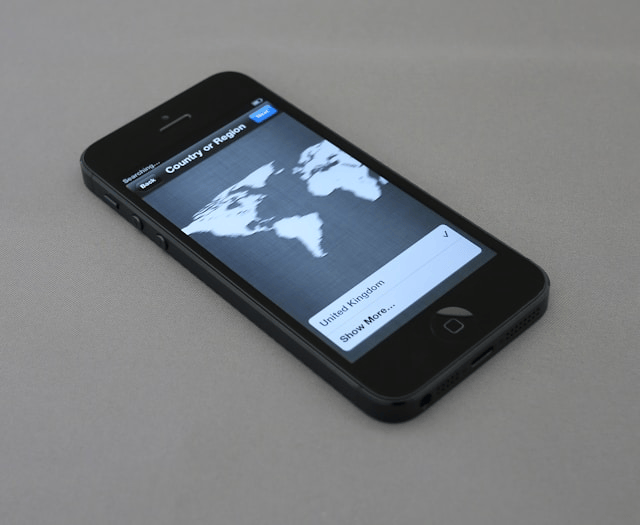Traveling internationally is exciting but staying connected while you’re abroad shouldn’t mean coming home to a shocking phone bill. Many travelers unknowingly rack up high roaming charges simply by checking emails, using maps, or keeping their phone’s data turned on. The good news? There are smarter, more affordable ways to stay online and in touch.
Whether you’re a digital nomad, remote worker, or casual vacationer, here’s how to stay connected abroad without expensive roaming fees.
Why Roaming Fees Are So High
When you use your mobile phone outside your home country without a specific international plan, you’re roaming. That means your service provider is partnering with a local network in your destination—and charging you for that privilege.
Common pitfalls include:
-
Background apps using data without your knowledge
-
Receiving calls or texts, even if you don’t answer
-
Uploading photos or using GPS without Wi-Fi
Roaming fees can vary by provider and country, but they often add up quickly. Just a few megabytes of data could cost more than your morning coffee back home.
Best Alternatives to International Roaming
Thankfully, you don’t have to rely on roaming to stay online. There are several cost-effective and reliable ways to stay connected abroad most of which can be set up before you even leave.
1. Use an International SIM Card
An international SIM card works in multiple countries and gives you a local number and data plan. It’s ideal for frequent travelers and can be inserted into any unlocked phone.
Pros:
-
One card for multiple destinations
-
Avoids roaming entirely
-
Pay-as-you-go or prepaid options
Where to get one:
Companies like OneSimCard, TravelSIM, and Airalo offer international SIM cards that can be purchased online and activated before your trip.
2. Buy a Local SIM Card at Your Destination
If you’re staying in one country for a while, a local SIM card is often the most budget-friendly option. Local telecom providers usually offer tourist-specific plans with generous data allowances.
Pros:
-
Often cheaper than international SIMs
-
Tailored for local use
-
Good network speeds
Tips:
-
Make sure your phone is unlocked
-
Bring your passport some countries require ID for purchase
-
Research top providers in your destination beforehand
3. Try an eSIM for Travel
If you have a newer smartphone, you can use an eSIM a digital SIM you activate without removing your physical one. It’s a flexible and fast way to stay connected abroad.
Benefits of eSIM for travel:
-
No physical card to install
-
Switch between carriers easily
-
Use local or global data plans instantly
Apps like Airalo, Holafly, and Nomad make it easy to download eSIMs for specific countries or regions.
4. Rent or Buy a Portable Wi-Fi Hotspot
A portable Wi-Fi hotspot (also known as a MiFi device) lets you connect multiple devices to the internet wherever you go. It’s a great option for families or travelers working remotely.
Options:
-
Rentals: Companies like Skyroam and Tep Wireless offer devices with flexible rental periods.
-
Buy your own: A good long-term solution for frequent travelers.
Pros:
-
Secure connection
-
No SIM card swapping needed
-
Works in multiple countries
5. Use Free Wi-Fi (Safely)
Cafés, hotels, airports, and public spaces often provide free Wi-Fi. While convenient, these networks can be unreliable or unsafe if not used properly.
How to make the most of free Wi-Fi:
-
Use messaging apps like WhatsApp, Telegram, or iMessage
-
Download offline maps (Google Maps, Maps.me) before going out
-
Avoid online banking or entering personal info without protection
Data-Saving Tips for Travelers
Even with a solid plan, it’s smart to limit unnecessary data usage. Here’s how to keep data consumption low:
-
Turn off background app refresh
-
Disable auto-updates for apps and cloud backups
-
Use offline features for maps, translations, and entertainment
-
Switch to low data mode in your phone’s settings
-
Use Wi-Fi calling when possible
Managing your data not only helps save money it extends the life of your plan, especially if you’re relying on a prepaid SIM.
Security and Privacy on Public Networks
Staying connected shouldn’t come at the expense of your privacy. Public Wi-Fi networks are convenient but often lack encryption, making them a target for hackers.
Stay safe with these practices:
-
Use a reliable VPN to encrypt your connection
-
Avoid accessing sensitive accounts on public Wi-Fi
-
Turn off automatic connections to open networks
-
Log out of devices when you’re done using them
Top VPNs for travel include NordVPN, ExpressVPN, and Surfshark, all of which offer mobile-friendly apps and global coverage.
Best Apps and Tools to Stay Connected
Here are some essential apps to help you stay online, communicate, and manage your data use:
-
WhatsApp / Telegram – For free international messaging and calls
-
Google Voice / Skype – For affordable phone calls
-
Airalo / Holafly / Nomad – Buy eSIMs for any region
-
Speedtest by Ookla – Check Wi-Fi and mobile data speeds
-
Data usage monitors – Keep track of daily consumption
Planning ahead and downloading these apps before you leave will save you time and stress on the road.
Final Thoughts
You don’t have to choose between staying connected and saving money while traveling. With the right tools and strategies, you can avoid roaming fees and enjoy reliable connectivity wherever your journey takes you.









